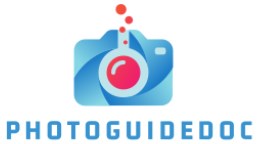While the allure of taking your own passport photos is undeniable – convenience, cost-effectiveness, and avoiding photo studio awkwardness – the decision deserves careful consideration. This article analyzes the advantages and disadvantages of DIY passport photography, weighing the ease of use and personal control against potential pitfalls like technical challenges and adherence to strict regulations. With this balanced perspective, you can make an informed decision that aligns with your budget, technical skills, and overall comfort level, paving the way for a smooth and stress-free journey.
Pros of DIY Passport Photos
- Cost-Effective: DIY passport photos are a budget-friendly option, as they eliminate the need for professional photography services. A visit to a photography studio can incur expenses, including the cost of prints and additional fees for expedited processing. By capturing your own passport photos, you can save money that can be better utilized for travel expenses or other necessities.
- Convenience: The convenience of creating your own passport photos cannot be overstated. Traditional photography studios often require appointments, and the process can be time-consuming. DIY passport photos allow you to take control of the timeline. Whether it’s late at night or early in the morning, you can capture your photo at your convenience, without the need to adhere to a studio’s schedule.
- Control Over Appearance: Taking your passport photos at home provides a level of control over your appearance that may be lacking in a professional studio. You have the flexibility to experiment with different expressions, angles, and outfits until you achieve a result that you are satisfied with. This control is particularly beneficial for those who are particular about their appearance or have specific preferences that may not align with the standardized approach of a photography studio.
- Flexibility in Retakes: Another advantage of DIY passport photos is the ability to retake the photo as many times as needed until you get the perfect shot. In a traditional studio setting, you may feel rushed or self-conscious, leading to suboptimal results. With DIY photos, you have the luxury of retaking shots until you are confident in the final result.
- Privacy: Some individuals value the privacy of their own space when taking important photographs. DIY passport photos allow you to capture your image within the comfort and privacy of your home, avoiding the potential discomfort associated with posing in a public or semi-public space like a photography studio.
- Learning Experience: Creating your passport photos at home can be a valuable learning experience. It allows you to familiarize yourself with basic photography principles, such as lighting, composition, and framing. This newfound knowledge can extend beyond passport photos, empowering you to take better photos in various settings.
In summary, the cost-effectiveness, convenience, control over appearance, flexibility in retakes, privacy, and potential learning experience make DIY passport photos an attractive option for those who are willing to invest time and effort in capturing their own images. However, it’s crucial to balance these advantages against the potential pitfalls and challenges associated with the DIY approach.
Minuses of DIY Passport Photos
- Technical Requirements: One of the primary challenges of DIY passport photos lies in meeting the specific technical requirements set by passport authorities. These requirements often include precise specifications for photo dimensions, background color, lighting conditions, and facial expression. Without a proper understanding of these standards, DIY photos may fail to comply, leading to potential issues with passport applications.
- Inconsistent Quality: DIY passport photos may suffer from inconsistent quality, particularly if the photographer lacks the necessary skills, equipment, or attention to detail. Lighting issues, shadows, or an uneven background can adversely impact the overall appearance of the photo. Inconsistent quality may not only lead to rejection by passport authorities but also result in a lack of professionalism in the final document.
- Strict Regulations: Passport photo regulations are stringent and can vary from country to country. DIY photos may unintentionally violate these regulations, leading to delays in passport processing or outright rejection of the application. Professional photographers are well-versed in these requirements and can ensure that the photos adhere to the necessary standards.
- Limited Professional Guidance: When taking passport photos at home, individuals may lack the guidance of a professional photographer. A trained photographer can offer insights into posing, framing, and ensuring that the photo meets official standards. DIY photographers may miss out on these professional tips, increasing the likelihood of errors in the final images.
- Potential for Non-compliance with International Standards: Passport photo standards can vary not only between countries but also between different institutions and applications. DIY photographers may inadvertently create photos that do not meet international standards, causing complications for individuals who frequently travel or apply for various official documents.
- Risk of Application Rejection: The most significant drawback of DIY passport photos is the risk of application rejection. Passport authorities have strict guidelines for photo submissions, and any deviation from these guidelines can result in delays or denials. This can be a significant inconvenience for individuals who need their passports promptly for travel or other purposes.
In conclusion, while DIY passport photos offer various advantages, including cost savings and convenience, individuals must be aware of the potential downsides. Technical requirements, inconsistent quality, strict regulations, limited professional guidance, and the risk of application rejection are crucial factors to consider before opting for the DIY approach. To mitigate these drawbacks, it’s essential to thoroughly research and adhere to passport photo guidelines, ensuring that the final images meet the necessary standards for a seamless application process.
Tips for Successfully Making Passport Photos with Your Own Hands
Capturing your own passport photos requires attention to detail and adherence to specific guidelines. Here are some tips to help you successfully create DIY passport photos:
| Checklist Item | Details and Considerations | Additional Tips |
| Research Requirements | Understand size, background color, and other technical details. | Stay updated on any changes in passport photo regulations. |
| Lighting | Ensure even, natural lighting to minimize shadows. | Experiment with different lighting angles for optimal results. |
| Composition | Follow guidelines for facial expression and head positioning. | Practice maintaining a neutral expression before taking photos. |
| Background | Choose a plain, neutral background without distractions. | Iron the background fabric to ensure a smooth, uniform appearance. |
| Editing and Filters | Avoid excessive editing or filters; keep photos natural. | Save a copy of the unedited photo for reference purposes. |
| Consistency | Maintain consistency in lighting, expression, and background. | Use a tripod or stable surface to keep the camera at a consistent height. |
| Test with Sample Prints | Print a sample to check dimensions and overall quality. | Use high-quality photo paper for the best print results. |
Before you start the process, thoroughly research the passport photo requirements set by the relevant authorities. Different countries and institutions may have varying specifications for dimensions, background color, facial expression, and other technical aspects. Ensure that your DIY photos align with these standards to avoid potential complications during the application process.
Adequate lighting is crucial for a successful passport photo. Choose a well-lit area with natural light to minimize shadows on your face. Avoid harsh lighting conditions, as they can create unflattering shadows or highlights. The goal is to achieve even, diffused lighting that highlights your facial features without causing distractions.
- Pay careful attention to the composition of your passport photos. Maintain a neutral facial expression, keep your head straight, and center your face within the frame. Passport authorities typically require a clear view of your face, so avoid tilting your head or making exaggerated expressions. Additionally, adhere to guidelines regarding the framing of your head and shoulders.
- Choose a plain white or light-colored background, as specified in passport photo regulations. Ensure that the background is free of patterns, textures, or distractions. A neutral background ensures that the focus remains on your face and prevents any potential issues with the acceptance of your passport photo.
- Passport authorities often require unaltered photos. Resist the temptation to use filters or engage in excessive photo editing. Keep the image natural and true to life. Avoid features that alter your appearance, as passport authorities need an accurate representation of how you look.
Maintain consistency across all aspects of your passport photos. This includes consistent lighting, facial expression, and background. Consistency ensures that the photos meet the required standards and reduces the likelihood of rejection due to discrepancies.
Before submitting your DIY passport photos, consider printing a sample to ensure that the dimensions and quality meet the required standards. This step allows you to identify any potential issues with the printing process, ensuring that the final submission is of the highest quality.
In summary, successfully creating passport photos at home involves a combination of meticulous research, attention to detail, and adherence to specific guidelines. By following these tips, you can increase the likelihood of producing DIY passport photos that meet the necessary standards and facilitate a smooth application process.

